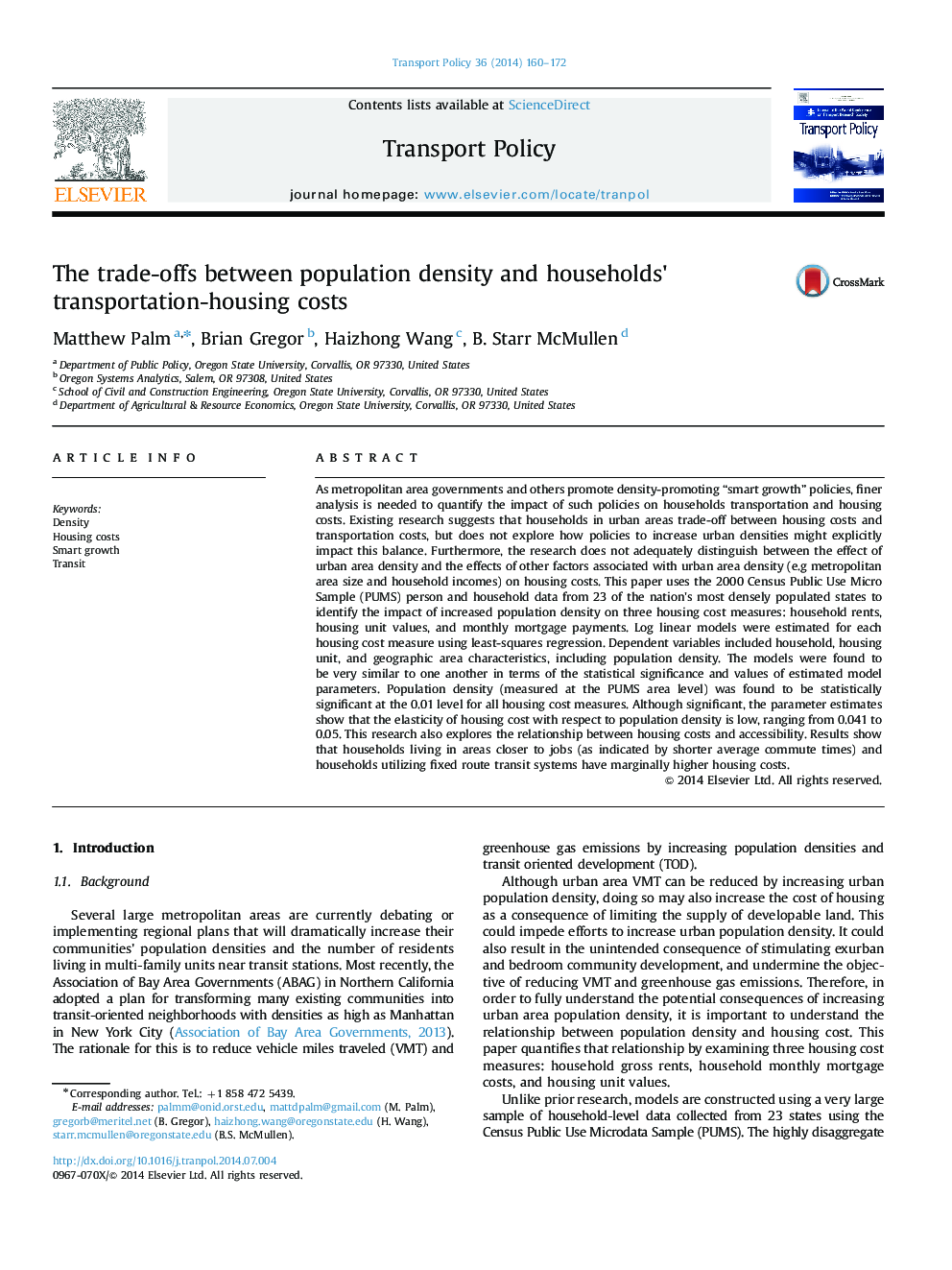| کد مقاله | کد نشریه | سال انتشار | مقاله انگلیسی | نسخه تمام متن |
|---|---|---|---|---|
| 7497808 | 1485841 | 2014 | 13 صفحه PDF | دانلود رایگان |
عنوان انگلیسی مقاله ISI
The trade-offs between population density and households׳ transportation-housing costs
دانلود مقاله + سفارش ترجمه
دانلود مقاله ISI انگلیسی
رایگان برای ایرانیان
موضوعات مرتبط
علوم انسانی و اجتماعی
علوم اجتماعی
جغرافیا، برنامه ریزی و توسعه
پیش نمایش صفحه اول مقاله

چکیده انگلیسی
As metropolitan area governments and others promote density-promoting “smart growth” policies, finer analysis is needed to quantify the impact of such policies on households transportation and housing costs. Existing research suggests that households in urban areas trade-off between housing costs and transportation costs, but does not explore how policies to increase urban densities might explicitly impact this balance. Furthermore, the research does not adequately distinguish between the effect of urban area density and the effects of other factors associated with urban area density (e.g metropolitan area size and household incomes) on housing costs. This paper uses the 2000 Census Public Use Micro Sample (PUMS) person and household data from 23 of the nation׳s most densely populated states to identify the impact of increased population density on three housing cost measures: household rents, housing unit values, and monthly mortgage payments. Log linear models were estimated for each housing cost measure using least-squares regression. Dependent variables included household, housing unit, and geographic area characteristics, including population density. The models were found to be very similar to one another in terms of the statistical significance and values of estimated model parameters. Population density (measured at the PUMS area level) was found to be statistically significant at the 0.01 level for all housing cost measures. Although significant, the parameter estimates show that the elasticity of housing cost with respect to population density is low, ranging from 0.041 to 0.05. This research also explores the relationship between housing costs and accessibility. Results show that households living in areas closer to jobs (as indicated by shorter average commute times) and households utilizing fixed route transit systems have marginally higher housing costs.
ناشر
Database: Elsevier - ScienceDirect (ساینس دایرکت)
Journal: Transport Policy - Volume 36, November 2014, Pages 160-172
Journal: Transport Policy - Volume 36, November 2014, Pages 160-172
نویسندگان
Matthew Palm, Brian Gregor, Haizhong Wang, B. Starr McMullen,